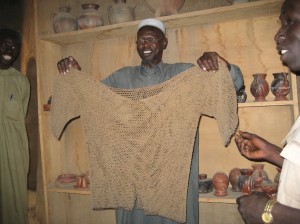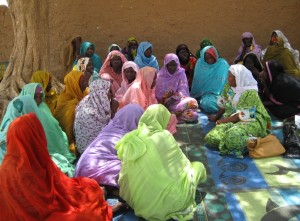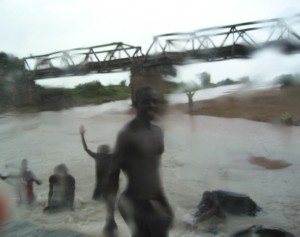There’s no better time to go work in Cameroon than eight weeks after major surgery, I figured. With a fresh incision scar that went from belly button to pubic bone (a rather unwieldy thing had to come out), I got on a plane in 2007 and relocated to Yaoundé for six months, leaving my husband, dog and hot showers behind.
 I went as a partner in the pilot of a telecommunications/microfinance program (the stories from which are so incredible that I’ve already done the outline for a future book). Fifty sites were chosen for this pilot, with half in what’s known as Cameroon’s “Far North” (also called the “Extreme North”).
I went as a partner in the pilot of a telecommunications/microfinance program (the stories from which are so incredible that I’ve already done the outline for a future book). Fifty sites were chosen for this pilot, with half in what’s known as Cameroon’s “Far North” (also called the “Extreme North”).
If you can imagine what it must have been like to travel from the United States or Europe to the North Pole in the 19th century, then you’ve probably got a pretty good idea of how hard it could be to get to the tip of this West African country. Trains, planes, trucks—none of them were reliable. And we weren’t just out there, we were WAY out there, in a skinny neck of land, sometimes a mile or less from the borders of Nigeria and Chad.
The landscape in that area has been called “lunar,” and the temperatures were purely “solar.” But despite the constant feeling of burning eyeballs and a bone-dry throat (and don’t even get me started on the damage to my hair), I was fascinated. Here’s why.
Cameroon’s Far North is a place where villages look like this:

And where if you want to get a good cell phone signal, you build your hut like this:
It’s a place where museums look like this:

And museum artifacts like this:
It’s a place that is barren.

And beautiful.
It’s a place where you do what you have to do to get along.
Especially during rain season, when the road to the bridge holds more water than the river itself.
It’s a place with animals.
Sometimes a LOT of them all at once (if the video is shaky, it’s because, well, I was shaking).
And, of course, children, no less the hams than anywhere else in this fantastic world.
When you think of extreme locations and lunar landscapes, which places come to mind for you?












